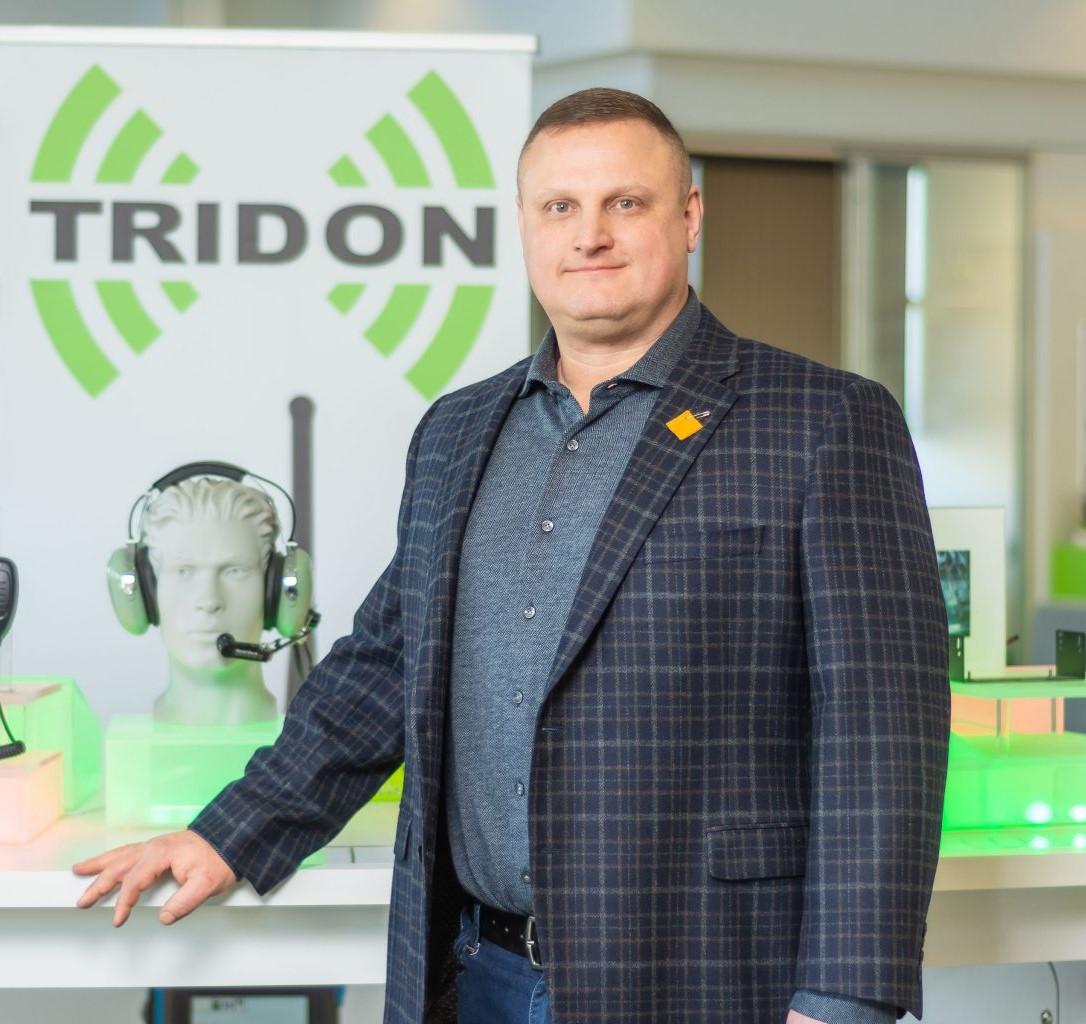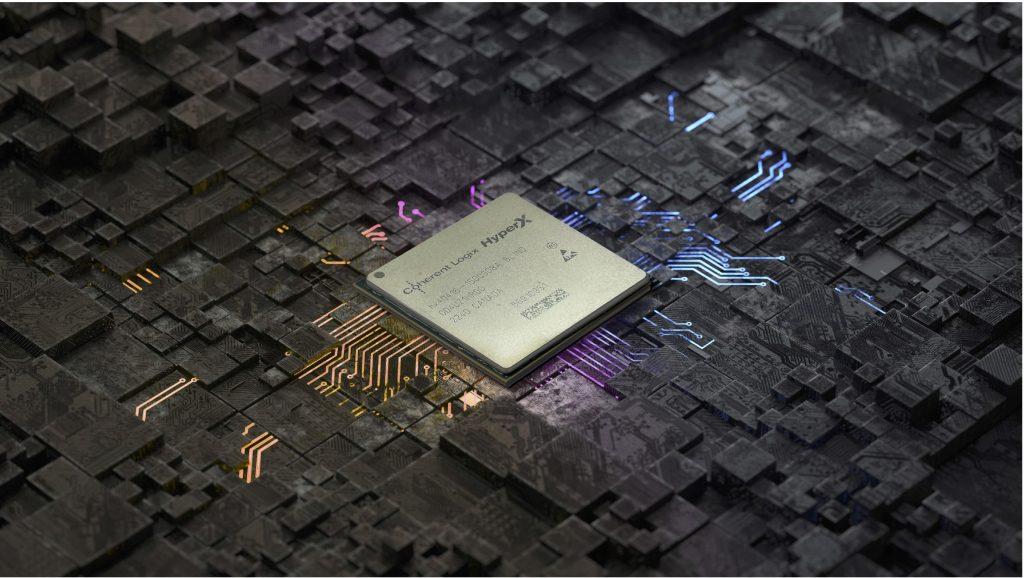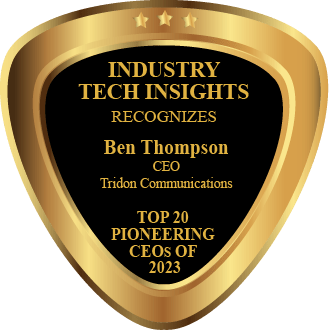
- December 13, 2025 9:06 pm
- California

Tridon Communications, founded in 1981 and currently led by Ben Thompson, CEO, Chad Tomachefski, CGO, and Greg Tolson, COO, is western Canada’s leading Telecommunications System Integrator (TSI). Tridon aims to address all aspects of telecommunication system requirements, including PTT land mobile radio, fiber optics, structured cable, access control, PTP wireless and microwave, tower construction and maintenance, cyber security, and more. Tridon can take any telecom project from inception to completion, including design and engineering, project management, construction, installation and maintenance, repair, and maintenance, successfully providing organizations with end-to-end solutions as a single point of contact for wired or wireless communications.
Many leading telecommunications companies working with wired and wireless networks, like Motorola, Kenwood, Belden, CommScope, Rajant, and Corning, encounter the significant challenge of service providers specializing exclusively in specific problem areas for each system.Consequently, work typically gets divided among companies and crews, making onsite coordination a struggle. In addition, the industry needs more value-added services, long-term warranties, and an inexperienced workforce. Tridon Communications identified this market need for a centralized service integrator and leveraged it.
“Tridon Communications takes a proactive approach to the telecommunication industry. We provide best-in-class solutions covering multiple technologies to meet client demands,” says Ben.
Tridon Communications started its journey as a wireless service provider, primarily working with Motorola and Kenwood as partners in the push-to-talk land mobile radio market. It has since expanded into other wireless domains such as WiSP services, cyber security, and AI. In recent years, with the expansion of telecommunications in sectors like video surveillance (CCTV), security alarms, oil and gas, mining, video analytics, cyber security, and agriculture. Most notably, Tridon Communications naturally grew into the wired communications market, providing OSP, Civil Construction, and Structured cabling solutions.
Building A Brand
Carrying over 41 years of industry experience, it has partners in various industries and ensures the services of one partner can be used to support another and vice versa. For example, Tridon Communications has several strategic partnerships in the telecommunications space which gives it a leading technology advantage and the potential to create even greater opportunities to provide its clients with solutions that provide efficiencies and pathways for greater data analytics, faster networks and can support its clients with any telecommunication needs in the digital world today. One of those strategic partnerships is with Motorola. Motorola is an industry leader in land mobile radio, security cameras and access control, cyber security, private LTE and much more. One of the products from the Motorola and Tridon portfolio is the Avigilon brand and product line. When Motorola brought Avigilon to the table Tridon was able to expand its portfolio to provide security support with extremely high quality camera systems with leading edge video analytics. Avigilon has market-leading video analytics that support Motorola’s Safety Reimagined. When cameras detect unusual activity, security alerts are automatically activated, allowing immediate action. Proactive systems provide real-time security alerts, but most competitors use reactive systems. These reactive systems can fix problems after identifying them by analysis, so real-time detection cannot be done. Tridon has succeeded with this solution in Airports, Schools, Health Care, Oil, Gas, and Rail.
Another excellent example of how telecommunications and agriculture have recently come together is represented well with a pilot project Tridon recently had the privilege of executing for an organization called Agriplay. Agriplay is taking advantage of a portion of the vacant downtown tower real estate in different cities and putting it to different use in the form of urban farming.
This organization seeks to reinvent the agriculture industry with vertical farming in vacant towers in downtown cores across the globe. Growing towers in these structures were filled with smaller plants, like cucumber and pepper. Automation was used in the project to keep track of the exact timing and dosage of water or nutrients given to the plants. Lighting and temperature is optimized through data analytics to provide the ideal growing condition mimicking ecosystems that exist in different locations around the globe. This brilliant initiative solves several problems. First, it tackles the 100-mile challenge so residents can, at some point in the future, acquire all their vegetables from grocery stores that receive this produce from a local facility based in the downtown core. Second, it seeks to fill spaces that were formerly vacant. Most importantly, this initiative does it all using low energy. Each grow tower operates on 4 CAT 6A Cables consuming only 260 watts of power.
“In another scenario; if you are in a camp in the Oil Sands, chances are the network you are watching TV on or using to face time your families was installed by one of our techs. There are devices on a network transmitting and receiving billions of bites of information per second to provide predictive analytics so an industrial site can run safer or more efficiently,” explains Ben. “We have telecommunications towers in the heart of many communities we serve. Intelligent lighting solutions that turn lights on and off when a person is either in or out of the office to reduce the amount of power consumption providing an effective tool to combat climate change.” What Tridon does is vital to everyone they do it for in some fashion. “Communication is the important thing we do in every part of our personal and professional lives today. As a result of Telecommunications, information is available at the tips of your fingers in a flash like never before. And it is Telecommunications Systems Integrators like Tridon that make that possible,” adds Ben.
Towards the Future
OT Cyber Security has been a big push for Tridon organization in recent years. Utilizing technology to aggregate information from the “Data Lake” is essential to extracting the information a company wants and needs to effectively operate their business. “On top of this, we have seen a big push in physical security. Taking our already qualified technicians to now install Cameras and Access control has seen a lot of growth,” says Ben. “But it goes much further than just putting a camera up, and it’s the integration of this solution into what can sometimes be a complex network so we can be proactive, safer, more efficient and preventative instead of reactive.”
Tridon’s approach to teamwork has helped propel them into an entirely new category. As a TSI, they perform 98% of the telecommunications scope of work in-house, which is unheard of in the industry. As a result, Tridon’s partners and clients have one hand to shake, making significant and minor projects considerably more efficient. More importantly, engaging Tridon to properly design and engineer a Telecommunications Solution right the first time has helped us a great deal with having clients return to them repeatedly.
“Our Engineering group has a motto. ‘We don’t like change orders, and neither should you, so let us get it right the first time’ Achieving this involves proactive engagement with our partners and clients alike,” elucidates Ben. “Proactive engagement is critical to your telecommunications success. The most important part of the hotel you stay in the weekend, the office building you worked in this week, or the industrial plant refining everything from pulp and paper to potash or oil and gas to uranium is your Telecommunications Network. It cannot be an afterthought or a footnote at the bottom of a drawing saying, “please include telecoms,” with no content. Take some time to do it right. Work with Tridon to get your budget within plus or minus 10-15%. “At Tridon we strive to be the best in the industry and every day we are looking for better ways to provide the best in class solutions for all of our clients network and security needs,” says Ben. “WE ARE THE SOLUTION!”

The Unique Solutions
The company offers powerful Systems on Chips (SoCs) and a software suite for creating customized solutions. And the current flagship is HyperX Midnight, a radiation-hardened supercomputer class SoC designed for use in LEO, MEO, and GEO (low-, middle-, and geosynchronous earth orbit) satellites.
HyperX Midnight, soon after its release, became the most advanced space processor available, with roughly four times the computing throughput at half the power demand of competitive chips.
“This is a significant step, as performance and power consumption control the magnitude of a satellite. We put enormous performance in a small package with low power obligations, so our customers can use much smaller satellite busses (chassis) which conserves millions in launch budgets,” says Walt. Another key feature of Coherent’s HyperX multi-chip modules compared to its competitors is that its chips are C-programmable and use familiar tools and debugging processes. “The solutions can be built on our chip in about 6 months whereas competitive FPGA offerings usually require 24 months of development time using complex hardware development languages and a very difficult process called timing closure,” he adds.
Coherent Logix’s SoCs are also completely reprogrammable, even in space, and can modify tasks in less than 50ns (nanoseconds). These two elements combine to create a huge advantage. Coherent Logix can make four products in the time our competitors take to build just one, and we can continuously enhance those products even if they are in orbit around the Earth.
These attributes herald back to Coherent Logix’s patented invention: the HyperX fabric. And this fabric is common to all Coherent Logix’ chips – both Space-qualified and terrestrial – so these advantages are available whether users are building a satellite, 5G cellular, secure networks, AI platforms, or 8K video encoders. Coherent Logix has served the Space 2.0 and Defense markets for 15 years. High-performance computing (HPC) with low power draw, on-orbit programmability, and ease of modular multimodal MCM design are the keys to success in these markets according to Walt.
The Leader who Makes the Difference
Walt Gall, Ph.D. serves as CEO on Coherent Logix’s executive management team. He is a business leader who builds world-class AI teams, products, and strategic partnerships for top-tier start-ups (Saffron, Intel acquisition) and large corporations (Amazon Devices, Meta (formerly FB).
As CEO of Coherent Logix, the leader in low-power, high-performance C- programmable processors for the embedded systems market, he recently helped guide the company through a funding initiative that raised $85 million.
Under Walt’s leadership, in early 2023 Coherent Logix launched HyperX Midnight, the world’s most advanced space processor, with roughly four times the computing throughput at half the power demand of competitive chips. Coherent Logix is currently in its fourth generation of HyperX processors for Space 2.0 and Defense, Connected Devices, and Media & Communications industries. The company has been granted more than 375 patents and 125 patents are pending.
Over the past decade, Walt has held various leadership roles on executive teams, including Amazon Alexa AI, Meta’s AR/VR and AI divisions, and Intel AI, with responsibilities for annual operational planning, developing a 3-year strategy, and managing more than $500M R&D and production budgets. He led product launches on conversational AI voice assistants on industry-leading consumer and social media devices with cloud-to-edge embedded applications and the development of several enterprise decision-support AI/IOT solutions in wellness, health, hi-tech, and insurance sectors.
Walt’s leadership style is centered on the customer and making data-informed, timely decisions. This customer-centric team approach is critical as the company scales its products and continues to expand its channel partnerships. “I’m referring to our direct customers and strategic partners, our leadership team and employees, and our Board of Directors,” he adds. “We have a collective interest in growing revenue and partnering on developing and commercializing products that have a meaningful impact on society.”
Armed with this mindset, Walt and the rest of the leadership team have skillfully guided Coherent Logix into hypergrowth markets: Space 2.0, cybersecurity, connected devices, media and communications.

Towards the Future
Coherent Logix is adding a cloud-based capability for new customers, universities, and the Maker/open-source community to work with their development tools and hardware. With older von Neumann microprocessor architecture designs and today’s programmable hardware, the software development process is so tedious that it can take 24-36 months for a customer to develop a solution e.g., a WiFi router. Coherent Logix microprocessors, however, have C-programmability and use standard software development processes. They also offer a cycle-accurate simulation platform. These advantages enable Coherent Logix to build solutions in just six months and continue to reprogram or reconfigure as needed to support their product and customer roadmaps with new software-defined functions or as standards evolve. This, combined with the hardware/software co-design process the company uses to build their System on Chips (SoCs), brings the power of digital transformation to the design and use of digital processors – amplifying both the pace of innovation and the competitive advantages of Coherent Logix.
For the near future, Walt is striving towards building highly functioning, distributed teams to bring the most disruptive products to market he has worked on, i.e., a new class of low-power, reprogrammable, high-performance computing devices. Coherent Logix is enabling customers to “redefine hardware as software” (which is also the company’s tagline) to meet the market demand for the flexibility, extensibility, and scalability of software-defined hardware systems and their small SWaP requirements, ranging from space satellites to consumer devices. Coherent Logix’s HyperX architecture provides a paradigm shift in hardware-software co-design from embedded systems to the cloud and delivers a more cost-effective and scalable software-defined device strategy. With its compute and memory co-localized, an event-oriented, parallel processing fabric, low power profile, and C-programmability, this has a 2-4x improvement in the time it takes to develop and launch products. This multi-faceted value proposition extends product customer lifetime value economic models, increasing the ROI for its ODM and OEM partners and customers. Accomplishing these product revenue growths and customer-centric goals will lead naturally to the longer-term goal of positioning Coherent Logix for a successful market exit for its shareholders.
“The future requires low-power, high performance computing for next generation connected devices – it will be everywhere we find a sensor, a camera, a robot, or smart device. As large as the Space 2.0 revolution is, the terrestrial edge and embedded devices will eclipse it by orders of magnitude,” concludes Walt. “We must be as efficient with power as possible. It has a cost to our planet to produce, and it turns into heat when you use it. If we want to preserve our planet, smart everything must become smart, efficient everything.”

" Our Engineering group has a motto. ‘We don’t like change orders, and neither should you, so let us get it right the first time’ Achieving this involves proactive engagement with our partners and clients alike. "
Ben Thompson
CEO